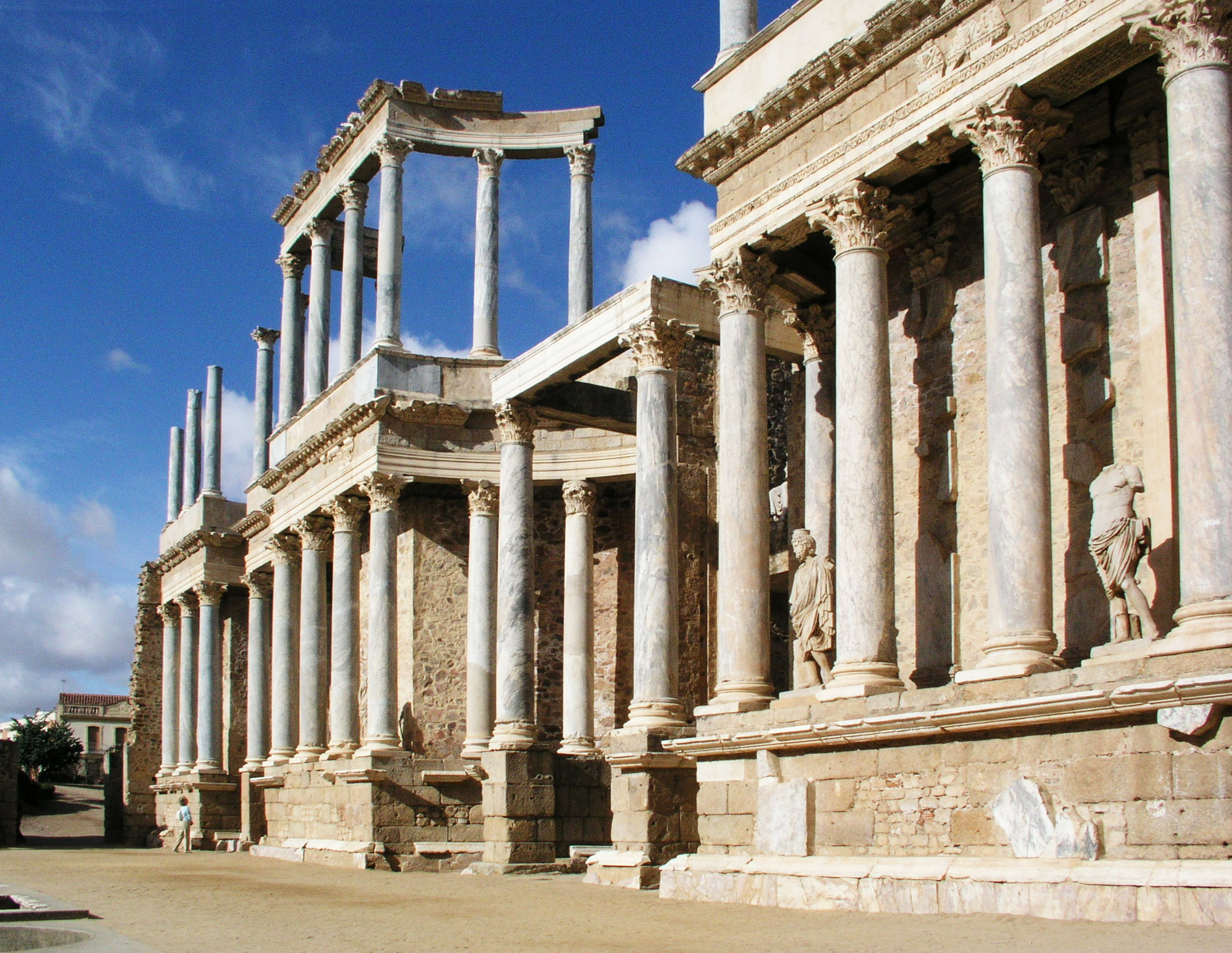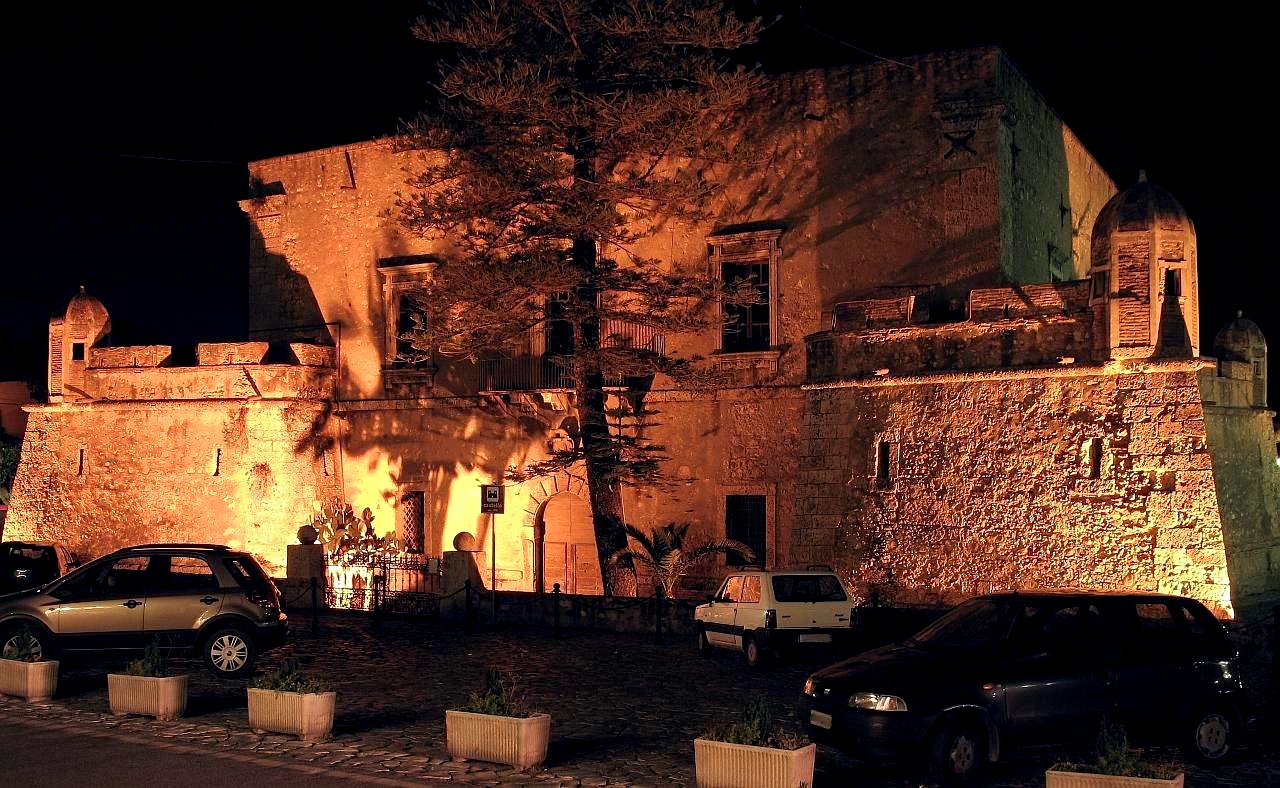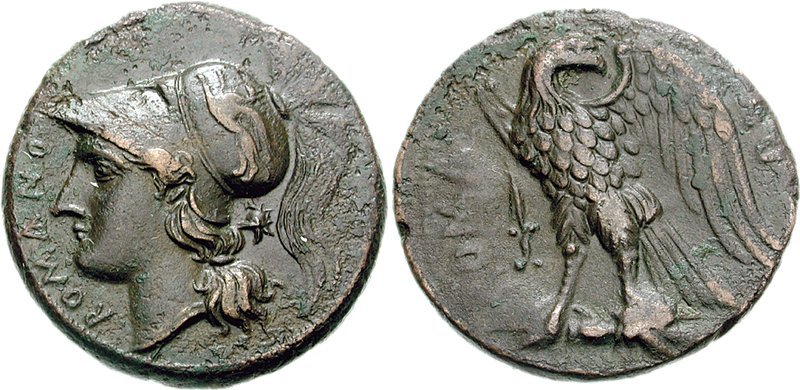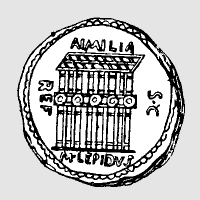|
Naulochus
Naulochus, Naulochos, Naulochoi, or Naulocha (; Greek: in Silius Italicus, in Suetonius, in Appian, meaning ''safe ship-sheltering''''Inductive scrutinies: Focus on Joyce'' by Fritz Senn and Christine O'Neill, p. 115, ), was an ancient city of Magna Graecia on the north coast of Sicily, between Mylae (modern Milazzo) and Cape Pelorus. It is known primarily from the great sea-fight in which Sextus Pompeius was defeated by Marcus Vipsanius Agrippa, 36 BCE, and which was fought between Mylae and Naulochus. ( Suet. ''Aug.'' 16; Appian, ''B.C.'' v. 116-22.) Pompeius himself during the battle had been encamped with his land forces at Naulochus (Appian ''l. c.'' 121), and after his victory, Octavian, in his turn, took up his station there, while Agrippa and Lepidus advanced to attack Messana (modern Messina). (''Id.'' 122.) It is clear from its name that Naulochus was a place where there was a good roadstead or anchorage for shipping. Some have doubted its existence as a populate ... [...More Info...] [...Related Items...] OR: [Wikipedia] [Google] [Baidu] |
Battle Of Naulochus
The naval Battle of Naulochus was fought on 3 September 36 BC between the fleets of Sextus Pompeius and Marcus Vipsanius Agrippa, off Naulochus, Sicily. The victory of Agrippa, admiral of Octavian, marked the end of the Pompeian resistance to the Second Triumvirate. Background After the strengthening of the bond between Octavian and Mark Antony with the Pact of Brundisium, the two triumvirs had to manage the menace of Sextus Pompey, son of Pompey. Sextus had occupied the province of Sicily, which provided much of Rome's grain supply. When Sextus had managed to bring famine to Rome, in 39 BC, Octavian and Antony sought an alliance with him, appointing him governor of Sicily, Sardinia, and the Peloponnese for five years ( Treaty of Misenum). The alliance was short-lived, and Sextus cut the grain supply to Rome. Octavian tried to invade Sicily in 38 BC, but his ships were forced to go back because of bad weather.Appian: ''The Civil Wars''. Book 5, paragraph 116–12online copy/ref ... [...More Info...] [...Related Items...] OR: [Wikipedia] [Google] [Baidu] |
Marcus Vipsanius Agrippa
Marcus Vipsanius Agrippa (; BC – 12 BC) was a Roman general, statesman and architect who was a close friend, son-in-law and lieutenant to the Roman emperor Augustus. Agrippa is well known for his important military victories, notably the Battle of Actium in 31 BC against the forces of Mark Antony and Cleopatra. He was also responsible for the construction of some of the most notable buildings of his era, including the original Pantheon. Born to a plebeian family , in an uncertain location in Roman Italy, he met the future emperor Augustus, then known as Octavian, at Apollonia, in Illyria. Following the assassination of Octavian's great-uncle Julius Caesar in 44 BC, Octavian returned to Italy. Around this time, Agrippa was elected tribune of the plebs. He served as a military commander, fighting alongside Octavian and Caesar's former general and right-hand man Mark Antony in the Battle of Philippi. In 40 BC, he was ''praetor urbanus'' and played a major role in the Peru ... [...More Info...] [...Related Items...] OR: [Wikipedia] [Google] [Baidu] |
Sextus Pompeius
Sextus Pompeius Magnus Pius ( 67 – 35 BC), also known in English as Sextus Pompey, was a Roman military leader who, throughout his life, upheld the cause of his father, Pompey the Great, against Julius Caesar and his supporters during the last civil wars of the Roman Republic. Sextus Pompey formed the last organized opposition to the Second Triumvirate, in defiance of which he succeeded in establishing an independent state in Sicily for several years. Biography Sextus Pompeius was the younger son of Gnaeus Pompeius Magnus (Pompey the Great) by his third wife, Mucia Tertia. His sister was Pompeia and his elder brother was Gnaeus Pompeius. Both boys grew up in the shadow of their father, one of Rome's greatest generals and an originally non-conservative politician who drifted to the more traditional faction when Julius Caesar became a threat. When Caesar crossed the Rubicon in 49 BC, thus starting a civil war, Sextus' older brother Gnaeus followed their father in his e ... [...More Info...] [...Related Items...] OR: [Wikipedia] [Google] [Baidu] |
Milazzo
Milazzo (; ; ) is a municipality () in the Metropolitan City of Messina, Sicily, southern Italy. It is the largest municipality in the Metropolitan City after Messina and Barcellona Pozzo di Gotto. The town has a population of around 31,500 inhabitants. Founded by the ancient Greeks around 716 BC and part of Magna Graecia and recognised as a ''Civitas, Roman civitas'' since 36 BC, the city was also at the centre of history during the First Punic War (260 BC), and in July 1860 with the arrival of the Redshirts (Italy), red shirts in the Battle of Milazzo (1860), battle of Milazzo during the Expedition of the Thousand, an event of the unification of Italy. History Several civilizations settled in Milazzo and left signs of their presence from the Neolithic age. In Homer's ''Odyssey'' Milazzo is presumably the place where Ulysses is shipwrecked and meets Polyphemus. Historically, the town originated as the ancient Greek ''Mylae'' () in Magna Graecia, an outpost of Zancle, occup ... [...More Info...] [...Related Items...] OR: [Wikipedia] [Google] [Baidu] |
Octavian
Gaius Julius Caesar Augustus (born Gaius Octavius; 23 September 63 BC – 19 August AD 14), also known as Octavian (), was the founder of the Roman Empire, who reigned as the first Roman emperor from 27 BC until his death in AD 14. The reign of Augustus initiated an imperial cult and an era of imperial peace (the or ) in which the Roman world was largely free of armed conflict. The Principate system of government was established during his reign and lasted until the Crisis of the Third Century. Octavian was born into an equestrian branch of the plebeian Octavia. Following his maternal great-uncle Julius Caesar's assassination in 44 BC, Octavian was named in Caesar's will as his adopted son and heir, and inherited Caesar's name, estate, and the loyalty of his legions. He, Mark Antony, and Marcus Lepidus formed the Second Triumvirate to defeat the assassins of Caesar. Following their victory at the Battle of Philippi (42 BC), the Triumvir ... [...More Info...] [...Related Items...] OR: [Wikipedia] [Google] [Baidu] |
Spadafora
Spadafora (Sicilian language, Sicilian: ''Spatafora'') is a ''comune'' (municipality) in the Metropolitan City of Messina in the Italy, Italian region Sicily, located about east of Palermo and about northwest of Messina. Spadafora borders the following municipalities: Roccavaldina, Rometta, Venetico. References External links Official website Cities and towns in Sicily {{Sicily-geo-stub ... [...More Info...] [...Related Items...] OR: [Wikipedia] [Google] [Baidu] |
Comune
A (; : , ) is an administrative division of Italy, roughly equivalent to a township or municipality. It is the third-level administrative division of Italy, after regions () and provinces (). The can also have the City status in Italy, title of (). Formed according to the principles consolidated in Medieval commune, medieval municipalities, the is provided for by article 114 of the Constitution of Italy. It can be divided into , which in turn may have limited power due to special elective assemblies. In the autonomous region of the Aosta Valley, a is officially called a in French. Overview The provides essential public services: Civil registry, registry of births and deaths, registry of deeds, and maintenance of local roads and public works. Many have a (), which is responsible for public order duties. The also deal with the definition and compliance with the (), a document that regulates the building activity within the communal area. All communal structures ... [...More Info...] [...Related Items...] OR: [Wikipedia] [Google] [Baidu] |
Barrington Atlas Of The Greek And Roman World
The ''Barrington Atlas of the Greek and Roman World'' is a large-format English language atlas of ancient Europe, Asia, and North Africa, edited by Richard Talbert, Richard J. A. Talbert. The time period depicted is roughly from Archaic Greece, archaic Greek civilization (pre-550 BC) through Late Antiquity (640 AD). The atlas was published by Princeton University Press in 2000. The book was the winner of the 2000 Association of American Publishers PROSE Awards, Award for Best Professional/Scholarly Multivolume Reference Work in the Humanities. Overview The main (atlas) volume contains 102 color topographic maps, covering territory from the British Isles and the Azores and eastward to Afghanistan and western China. The size of the volume is 33 x 48 cm. A 45-page gazetteer is also included in the atlas volume. The atlas is accompanied by a map-by-map directory on CD-ROM, in Portable Document Format, PDF format, including a search index. The map-by-map directory is also availab ... [...More Info...] [...Related Items...] OR: [Wikipedia] [Google] [Baidu] |
Ptolemy
Claudius Ptolemy (; , ; ; – 160s/170s AD) was a Greco-Roman mathematician, astronomer, astrologer, geographer, and music theorist who wrote about a dozen scientific treatises, three of which were important to later Byzantine science, Byzantine, Islamic science, Islamic, and Science in the Renaissance, Western European science. The first was his astronomical treatise now known as the ''Almagest'', originally entitled ' (, ', ). The second is the ''Geography (Ptolemy), Geography'', which is a thorough discussion on maps and the geographic knowledge of the Greco-Roman world. The third is the astrological treatise in which he attempted to adapt horoscopic astrology to the Aristotelian physics, Aristotelian natural philosophy of his day. This is sometimes known as the ' (, 'On the Effects') but more commonly known as the ' (from the Koine Greek meaning 'four books'; ). The Catholic Church promoted his work, which included the only mathematically sound geocentric model of the Sola ... [...More Info...] [...Related Items...] OR: [Wikipedia] [Google] [Baidu] |
Messina
Messina ( , ; ; ; ) is a harbour city and the capital city, capital of the Italian Metropolitan City of Messina. It is the third largest city on the island of Sicily, and the 13th largest city in Italy, with a population of 216,918 inhabitants in the city proper and about 595,948 in the metropolitan city as of 2025. It is located near the northeast corner of Sicily, at the Strait of Messina and it is an important access terminal to Calabria region, Villa San Giovanni, Reggio Calabria on the mainland. Founded by the Sicels with the name of ''Zancle'' in 757 BC, which in Siculian, their language meant sickle, it was repopulated by Greek colonisation, Greek colonists of Magna Graecia and renamed ''Messana''. The city was renamed ''Messina'' in the Byzantine Empire, Byzantine age. It was an important Roman Empire, Roman, and then Byzantine Empire, Greek-Byzantine city, but in 843 it was completely destroyed by the Arabs. Almost abandoned during the Islamic period, it rose again i ... [...More Info...] [...Related Items...] OR: [Wikipedia] [Google] [Baidu] |
Marcus Aemilius Lepidus (triumvir)
Marcus Aemilius Lepidus (; 89 BC – late 13 or early 12 BC) was a Roman general and statesman who formed the Second Triumvirate alongside Octavian and Mark Antony during the final years of the Roman Republic. Lepidus had previously been a close ally of Julius Caesar. He was also the last '' pontifex maximus'' before the Roman Empire, and (presumably) the last '' interrex'' and ''magister equitum'' to hold military command. Though he was an able military commander and proved a useful partisan of Caesar, Lepidus has always been portrayed as the least influential member of the Triumvirate. He typically appears as a marginalised figure in depictions of the events of the era, most notably in Shakespeare's plays. While some scholars have endorsed this view, others argue that the evidence is insufficient to discount the distorting effects of propaganda by his opponents, principally Cicero and, later, Augustus. Family Lepidus was the son of Marcus Aemilius Lepidus (consul in ... [...More Info...] [...Related Items...] OR: [Wikipedia] [Google] [Baidu] |
Map Of Ancient Italy, Southern Part
A map is a symbolic depiction of interrelationships, commonly spatial, between things within a space. A map may be annotated with text and graphics. Like any graphic, a map may be fixed to paper or other durable media, or may be displayed on a transitory medium such as a computer screen. Some maps change interactively. Although maps are commonly used to depict geographic elements, they may represent any space, real or fictional. The subject being mapped may be two-dimensional such as Earth's surface, three-dimensional such as Earth's interior, or from an abstract space of any dimension. Maps of geographic territory have a very long tradition and have existed from ancient times. The word "map" comes from the , wherein ''mappa'' meant 'napkin' or 'cloth' and ''mundi'' 'of the world'. Thus, "map" became a shortened term referring to a flat representation of Earth's surface. History Maps have been one of the most important human inventions for millennia, allowing humans t ... [...More Info...] [...Related Items...] OR: [Wikipedia] [Google] [Baidu] |






